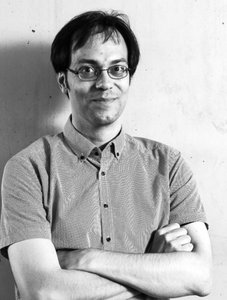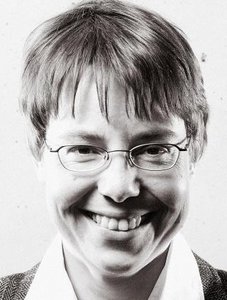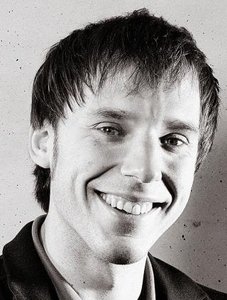
Highlights
Publication Highlights
Liquid transport facilitated by channels in Bacillus subtilis biofilms
Many bacteria on earth exist in surface-attached communities known as biofilms. These films are responsible for manifold problems, including hospital-acquired infections and biofouling, but they can also be beneficial. Biofilm growth depends on the transport of nutrients and waste, for which diffusion is thought to be the main source of transport. However, diffusion is ineffective for transport over large distances and thus should limit growth. Nevertheless, biofilms can grow to be very large. Here we report the presence of a remarkable network of well-defined channels that form in wild-type Bacillus subtilis biofilms and provide a system for enhanced transport. We observe that these channels have high permeability to liquid flow and facilitate the transport of liquid through the biofilm. In addition, we find that spatial variations in evaporative flux from the surface of these biofilms provide a driving force for the flow of liquid in the channels. These channels offer a remarkably simple system for liquid transport, and their discovery provides insight into the physiology and growth of biofilms.
James N. Wilking, Vasily Zaburdaev, Michael De Volder, Richard Losick, Michael P. Brenner and David A. Weitz
PNAS 110 (3), 848 (2013)
Read moreAwards and Honors
Mitgliedschaft in der Sächsischen Akademie der Wissenschaften zu Leipzig
Prof. Jan-Michael Rost ist zum Mitglied der Sächsischen Akademie der Wissenschaften zu Leipzig ernannt worden.
Read morePublication Highlights
Forces driving epithelial spreading in zebrafish gastrulation
Contractile actomyosin rings drive various fundamental morphogenetic processes ranging from cytokinesis to wound healing. Actomyosin rings are generally thought to function by circumferential contraction. Here, we show that the spreading of the enveloping cell layer (EVL) over the yolk cell during zebrafish gastrulation is driven by a contractile actomyosin ring. In contrast to previous suggestions, we find that this ring functions not only by circumferential contraction but also by a flow-friction mechanism. This generates a pulling force through resistance against retrograde actomyosin flow. EVL spreading proceeds normally in situations where circumferential contraction is unproductive, indicating that the flow-friction mechanism is sufficient. Thus, actomyosin rings can function in epithelial morphogenesis through a combination of cable-constriction and flow-friction mechanisms.
Martin Behrndt, Guillaume Salbreux, Pedro Campinho, Robert Hauschild, Felix Oswald, Julia Rönsch, Stephan Grill and Carl?Philipp Heisenberg
Science 338, 257 (2012)
Read morePublication Highlights
Covariant Lyapunov Vectors from Reconstructed Dynamics: The Geometry behind True and Spurious Lyapunov Exponents
The estimation of Lyapunov exponents from time series suffers from the appearance of spurious Lyapunov exponents due to the necessary embedding procedure. Separating true from spurious exponents poses a fundamental problem which is not yet solved satisfactorily. We show, in this Letter, analytically and numerically that covariant Lyapunov vectors associated with true exponents lie in the tangent space of the reconstructed attractor. Therefore, we use the angle between the covariant Lyapunov vectors and the tangent space of the reconstructed attractor to identify the true Lyapunov exponents. The usefulness of our method, also for noisy situations, is demonstrated by applications to data from model systems and a NMR laser experiment.
Hong-liu Yang, Günter Radons, and Holger Kantz
Phys. Rev. Lett. 109, 244101 (2012)
Read morePublication Highlights
On the origin of long-range correlations in texts
The complexity of human interactions with social and natural phenomena is mirrored in the way we describe our experiences through natural language. In order to retain and convey such a high dimensional information, the statistical properties of our linguistic output has to be highly correlated in time. An example are the robust observations, still largely not understood, of correlations on arbitrary long scales in literary texts. In this paper we explain how long-range correlations flow from highly structured linguistic levels down to the building blocks of a text (words, letters, etc..). By combining calculations and data analysis we show that correlations take form of a bursty sequence of events once we approach the semantically relevant topics of the text. The mechanisms we identify are fairly general and can be equally applied to other hierarchical settings.
Eduardo G. Altmann, Giampaolo Cristadoro and Mirko Degli Esposti
PNAS 109 (29), 11582 (2012)
Read moreInstitute's News
New research group 'Quantum Aggregates'
The junior research group headed by Dr. Alexander Eisfeld investigates the emergence of collective effects in assemblies of atoms or molecules, with a particular focus on the coupling between electronic and nuclear degrees of freedom.
Read morePublication Highlights
Uninformed Individuals Promote Democratic Consensus in Animal Groups
Conflicting interests among group members are common when making collective decisions, yet failure to achieve consensus can be costly. Under these circumstances individuals may be susceptible to manipulation by a strongly opinionated, or extremist, minority. It has previously been argued, for humans and animals, that social groups containing individuals who are uninformed, or exhibit weak preferences, are particularly vulnerable to such manipulative agents. Here, we use theory and experiment to demonstrate that, for a wide range of conditions, a strongly opinionated minority can dictate group choice, but the presence of uninformed individuals spontaneously inhibits this process, returning control to the numerical majority. Our results emphasize the role of uninformed individuals in achieving democratic consensus amid internal group conflict and informational constraints.
Iain D. Couzin, Christos C. Ioannou, Güven Demirel, Thilo Gross, Colin J. Torney, Andrew Hartnett, Larissa Conradt, Simon A. Levin, Naomi E. Leonard
Science 334, 1578 (2011)
Read moreAwards and Honors
Hertha-Sponer-Preis 2011 der DPG
Martina Hentschel vom Dresdner Max-Planck-Institut für Physik komplexer Systeme erhält den mit 3.000 Euro dotierten „Hertha-Sponer-Preis“ der Deutschen Physikalischen Gesellschaft. Forschungsschwerpunkt der 39-jährigen Wissenschaftlerin ist die theoretische Beschreibung mesoskopischer elektronischer und optischer Systeme. Ihre Arbeiten sind für die Entwicklung miniaturisierter Laser von praktischer Bedeutung.
Read morePublication Highlights
A Homonuclear Molecule with a Permanent Electric Dipole Moment
Permanent electric dipole moments in molecules require a breaking of parity symmetry. Conventionally, this symmetry breaking relies on the presence of heteronuclear constituents. We report the observation of a permanent electric dipole moment in a homonuclear molecule in which the binding is based on asymmetric electronic excitation between the atoms. These exotic molecules consist of a ground-state rubidium (Rb) atom bound inside a second Rb atom electronically excited to a high-lying Rydberg state. Detailed calculations predict appreciable dipole moments on the order of 1 Debye, in excellent agreement with the observations.
Weibin Li, Thomas Pohl, Jan-Michael Rost, Seth T. Rittenhouse, Hossein R. Sadeghpour, Johannes Nipper, Bjoern Butscher, Jonathan Balweski, Vera Bendowsky, Robert Löw, Tilman Pfau
Science 334, 1110 (2011)
Read moreAwards and Honors
Paul Ehrlich- und Ludwig Darmstädter-Nachwuchspreis 2011 der Paul Ehrlich-Stiftung
Wie differenzieren sich Zellen in die verschiedenen Zelltypen, die einen lebenden Organismus ausmachen? Neben molekularen Mechanismen spielen dabei mechanische Prozesse eine wesentliche Rolle. Wie diese Parameter miteinander interagieren, steht im Zentrum der Forschungsaktivitäten von Dr. Stephan Grill. Der Biophysiker hat dazu eine Methode entwickelt, mit der die mechanischen Kräfte in lebenden Zellen gemessen werden können. Mit Hilfe eines Lasers kann er bestimmte Zellstrukturen minimal-invasiv zerstören. Deren Fragmente bewegen sich danach voneinander weg, falls die Struktur unter mechanischer Spannung stand. Auf diese Weise erhält der Wissenschaftler einen Überblick darüber, wo in der Zelle mechanische Kräfte walten.
Read more



